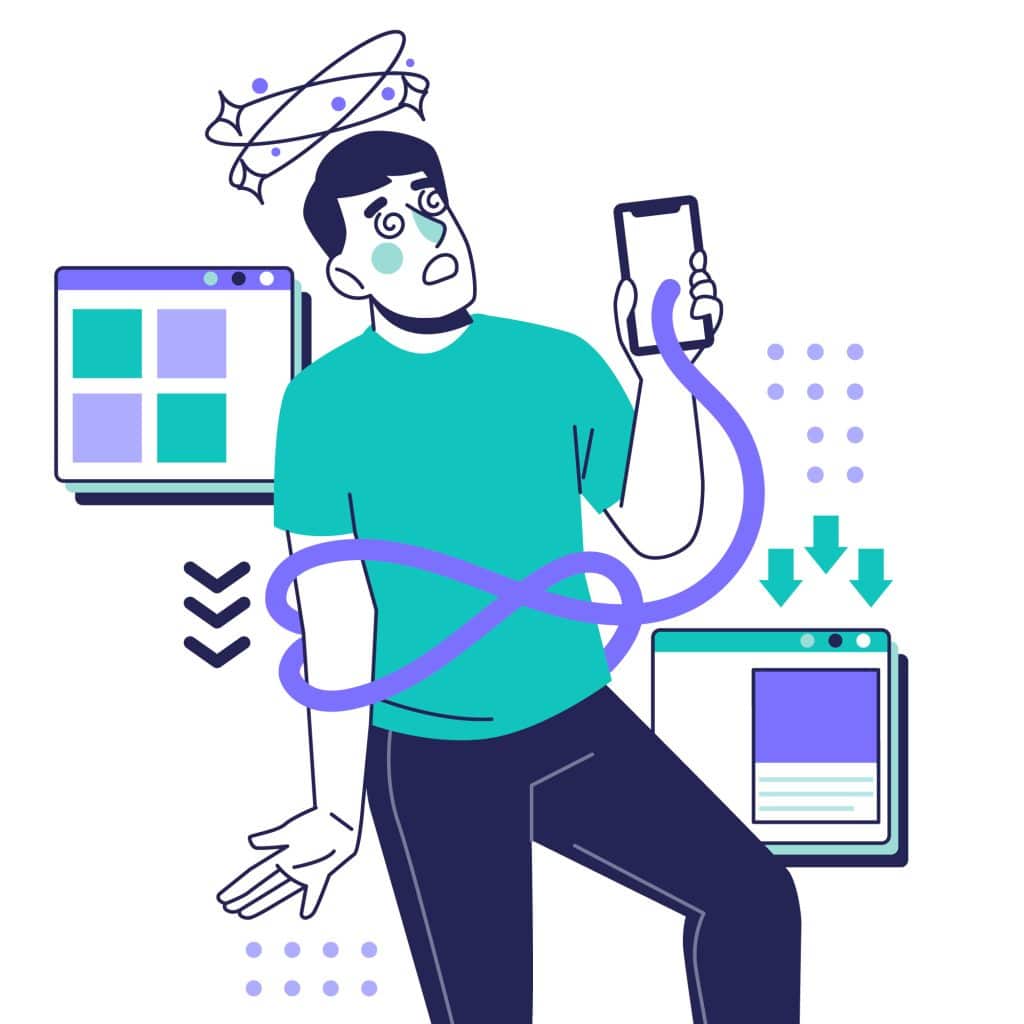Minimal Digital Distractions Lead to Mental Clarity
Natalie Brooks July 31, 2025
In today’s hyper-connected world, digital distractions are one of the primary causes of reduced mental clarity. With the constant stream of notifications, social media alerts, and work-related messages, it’s easy to feel mentally drained and unproductive. The truth is that these constant distractions hinder our cognitive ability to focus, problem-solve, and generate creative ideas. Research indicates that it takes an average of 23 minutes to regain focus after an interruption, making it clear that digital distractions cause a significant drain on our mental resources.
However, emerging trends in the workplace and lifestyle show that minimizing digital distractions can have profound effects on mental clarity, cognitive performance, and overall well-being. By consciously limiting digital interruptions, individuals can reclaim their focus, productivity, and creativity. This article explores how reducing digital distractions can improve your mental clarity, productivity, and work-life balance.

Why Digital Distractions Are Harming Our Mental Clarity
Digital distractions manifest in many forms. They range from social media alerts and work emails to the constant buzz of smartphone notifications. These interruptions pull our attention away from the task at hand, forcing our brains to constantly switch between different modes of thinking, which is known as task switching. Although it may seem like multitasking, studies show that task switching is far less efficient than focusing on one task at a time.
The problem arises because every time we shift our attention, our brain requires a reset. This cognitive “reboot” results in lost time and reduced mental clarity. Research from the American Psychological Association confirms that constant multitasking diminishes brainpower, impairs decision-making, and reduces creativity.
Mental clarity is crucial for making sound decisions, maintaining focus, and nurturing creativity. When we are free from distractions, our brains have the opportunity to enter a state of deep focus or “flow,” which is essential for producing high-quality work. The opposite occurs when distractions fragment our focus—mental fatigue, stress, and decreased productivity follow.
The Connection Between Digital Distractions and Cognitive Fatigue
The human brain is designed to focus, but with the overwhelming amount of digital stimuli we face daily, our cognitive abilities are taxed. Here’s why:
- The Dopamine Effect: Every time we receive a new notification, our brains release dopamine, the chemical responsible for feelings of pleasure and motivation. This creates a cycle of habitual checking. We feel compelled to check our phone or computer constantly for rewards, even if the notifications are trivial.
- Cognitive Overload: As a result of constant interruptions, our brains experience cognitive overload, leading to poor mental clarity. The more our brains are overstimulated, the harder it is to focus on important tasks. This overload can lead to mental burnout, making it even harder to think critically or creatively.
A study published in the Journal of Experimental Psychology found that multitasking not only hampers productivity but also disrupts deep thinking, which is essential for solving complex problems.
Benefits of Reducing Digital Distractions
When we reduce digital distractions, we unlock several cognitive and psychological benefits:
1. Improved Focus and Efficiency
Fewer distractions mean that we can stay focused on one task for longer periods, leading to more efficient work. When we fully engage with one task, we are more likely to produce higher-quality work in less time.
2. Enhanced Creativity
Mental clarity is directly linked to creativity. By reducing distractions, we give our minds the space it needs to make connections and explore new ideas. Creativity thrives when we are free from the constant pull of notifications and alerts.
3. Reduced Stress and Anxiety
Constantly checking emails, social media, or other apps can create a sense of urgency, which increases stress. By limiting these distractions, we create a calmer environment that allows us to think more clearly and make better decisions.
4. Improved Decision Making
Digital distractions impair our decision-making abilities. When we’re not distracted, we’re able to weigh options more thoughtfully and make more informed decisions.
5. Better Work-Life Balance
When we establish boundaries around technology use, we can maintain a better work-life balance. Reducing digital distractions helps us stay present during personal time and prevents work from spilling over into our personal lives.
How to Minimize Digital Distractions for Greater Mental Clarity
Now that we understand the benefits of limiting digital distractions, how can we practically implement strategies to reduce them? Here are several actionable tips:
1. Enable “Do Not Disturb” Mode
Most smartphones and computers have a “Do Not Disturb” mode that silences notifications from apps, messages, and calls. Activating this mode during deep work sessions can help maintain focus by reducing interruptions.
2. Limit Social Media Use
Social media is one of the biggest sources of digital distraction. Use time management apps to limit your social media usage during work hours. Tools like Freedom and Forest help you block distracting websites and apps, allowing you to focus better.
3. Schedule Email Checking Times
Instead of checking your email constantly throughout the day, schedule specific times for email checks. This limits the number of interruptions and helps you stay on track with other important tasks.
4. Create a Distraction-Free Workspace
Design your workspace to minimize distractions. This can include turning off notifications, organizing your desk, and using noise-canceling headphones to block out background noise. The goal is to create an environment conducive to deep work.
5. Practice Mindfulness
Mindfulness practices like meditation can help train your brain to focus and stay present. Engaging in daily mindfulness exercises can increase your ability to concentrate and reduce susceptibility to distractions.
6. Use Focused Work Blocks
The Pomodoro Technique is a popular method that involves working in focused intervals, typically 25 minutes, followed by a 5-minute break. These short bursts of productivity are ideal for minimizing distractions and maintaining mental clarity.
7. Digital Detox
Occasionally, it’s helpful to disconnect entirely from digital devices. Consider implementing a digital detox day or weekend where you refrain from using all screens. This can give your brain the time it needs to reset and recharge.
The Role of Employers in Reducing Digital Distractions
As digital distractions continue to take a toll on productivity and mental well-being, companies are beginning to recognize the importance of creating environments that minimize interruptions. Here are some initiatives that employers are adopting:
- Encouraging Digital Detox: Some companies are promoting “no-email” days or encouraging employees to set boundaries for technology use during off-hours.
- Creating Focused Workspaces: Employers are designing workspaces that allow employees to work without constant interruptions. This includes quiet zones, noise-canceling headphones, and limiting open-office spaces.
- Supporting Mental Health Initiatives: Organizations are offering resources such as mindfulness workshops, counseling services, and mental health days to help employees manage stress and improve focus.
Conclusion
In a world full of constant notifications and digital interruptions, minimizing distractions is key to achieving mental clarity and maintaining cognitive health. By actively reducing digital distractions, we improve our focus, creativity, decision-making abilities, and overall productivity. Implementing practices like scheduling breaks, using “Do Not Disturb” modes, and engaging in mindfulness exercises can help create a work environment conducive to deep thinking and innovation. As more individuals and companies embrace these practices, we will see a shift toward better work-life balance, mental well-being, and enhanced productivity. It’s time to take control of our digital habits and prioritize mental clarity to unlock our full potential.
References:
- Ebbinghaus, H. (1885).Memory: A Contribution to Experimental Psychology.
- Brown, P. C., Roediger, H. L., & McDaniel, M. A. (2014).Make It Stick: The Science of Successful Learning. Harvard University Press.
- Schunk, D. H. (2012).Learning Theories: An Educational Perspective. Pearson.







